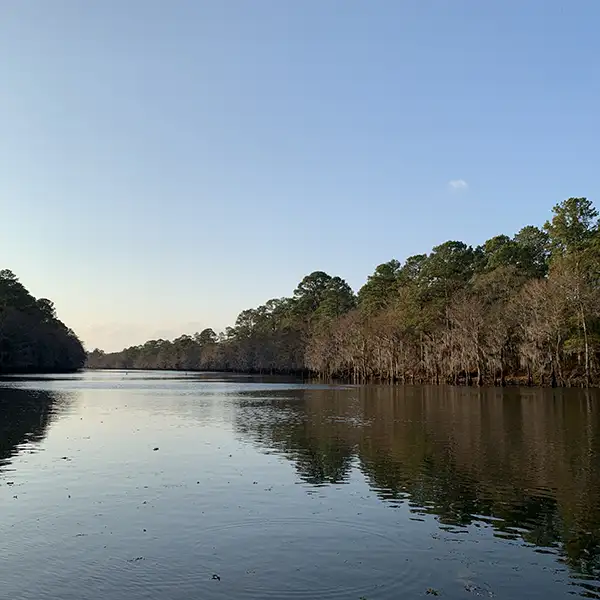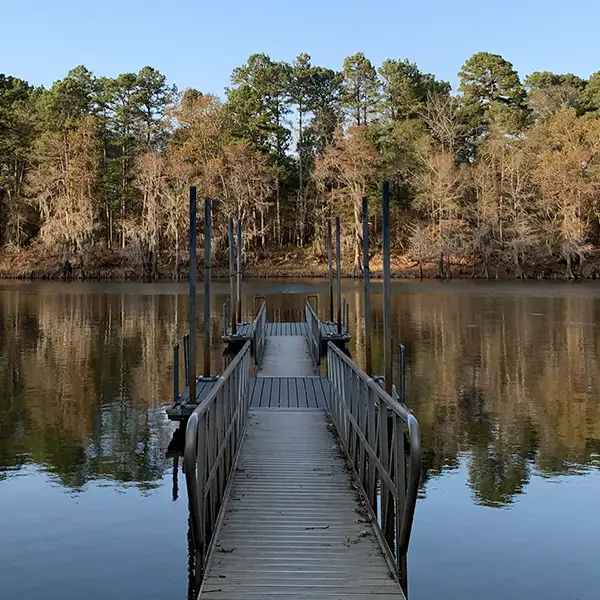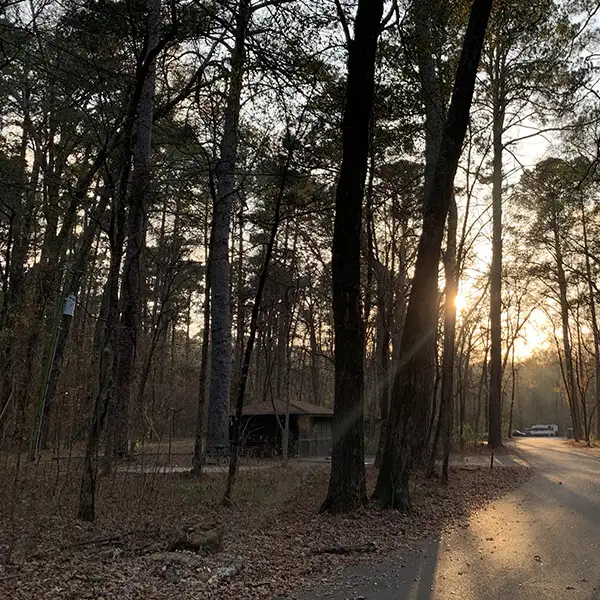Caddo Lake in Texas is a natural wonder that has been captivating visitors for centuries. With its cypress trees draped in Spanish moss, labyrinthine channels, and abundant wildlife, this lake is a true marvel of nature. Located on the border between Texas and Louisiana, it is the largest natural freshwater lake in the South and is home to a diverse ecosystem that includes more than 200 species of birds, fish, and other animals. In this article, we will explore the history and beauty of Caddo Lake, and why it is a must-visit destination for nature lovers and outdoor enthusiasts.
The lake feels alive with thick bald cypress and a tangle of aquatic plants, in addition to the marine and bird life. Because the vegetation surrounding the lake is so lush, much of Caddo Lake is a maze. From sloughs to bayous and ponds, it makes for a fun and eerie to explore. There are truly unique sights at every turn.



Formation Of The Lake
Four watersheds help form the lake: Little Cypress Bayou, Big Cypress Bayou, Black Cypress Bayou, and Jeems Bayou. Together they helped create the largest natural lake of fresh water in the South. Although the lake had a dam built about 100 years ago, so technically it’s not fully natural anymore.
Caddo Lake is about 26,800 acres with maximum depth of 20 feet. Don’t expect clear water, thanks to all the aquatic live and cypress the water is stained a brownish copper color.
Here is a video about the lake that I did for our friends at LakeHub:
Modern History
In 1835, the US purchased Caddo Lake from the Caddo Indians for $80,000. They were the first settlers on the lake, and they were a friendly and peaceful tribe. They hunted, fished, made pottery and weapons.
The lake was a heaven for outlaws of all types and a region of the lake known as “Old Monterey” was the center for a racetrack, saloons, brothels, rooster fights, and more it boasted that it averaged at least one violent death per a day as travelers were ambushed, robbed, and murdered.
The area started booming in the 1830s to 1840s when paddleboat and steamboat traffic through the lake was in full swing and used for everything from commerce trade of iron ore, cotton, leather goods, and many other trade items and during the Civil War, the steamers were used to move both military and civilian supplies to the rest of the confederacy.
The lake level was lowered spelling an end to the paddleboat and steamboat business but creating rich beds of pearls springing up a whole new industry but the lake levels rose and wiped out the peal industry.
At the turn of the century oil was discovered on Caddo Lake. The first over the water drilling platform was built on the lake, and today there are still oil wells pumping.
Today a lot of the Louisiana side of the lake is under siege by a fast-spreading invasive plant. The velcro-like aquatic fern known a Giant Salvinia is swarming Caddo Lake. It doubles in size every two to four days, rapidly killing off life below the surface.
Things To Do At Caddo Lake
With so much to see and experience, you can imagine that there are a lot of things to do at Caddo Lake. Here are some of my favorites.
Camping
While there are many RV parks in the vicinity, few are actually on the lake. The best campground on Caddo Lake in my opinion is Caddo Lake State Park. It’s an old park with obvious Civilian Conservation Corps signatures, and it’s right on the water. There are full cabins, rural screened-in shelter cabins, and plenty of camping spots to book.
Fishing
There is some fantastic fishing on Caddo. If you are in a boat it can be challenging due to the low depth and underwater obstructions, so you pretty much have to stay in the marked channels. Kayak fishing is popular. Since this lake exists in two states, make sure you are familiar with the Caddo Lake fishing regulations.
Kayaking
Caddo is famous for paddling, and a kayak really is the best way to get around the lake. You have full mobility and don’t need to worry about staying in boat channels.
Hiking
In the state park there is a network of hiking trails. I would really recommend sticking to improved trails in this area, and even then be on a sharp lookout for snakes. I have personally seen Timber Rattlesnakes, Copperheads and Water Moccasins in this area of Deep East Texas. Don’t let that stop you from getting out and experiencing the wild country surrounding the lake.
Resource Guide For Caddo Lake
| Texas Outside Favorites | Cruising Big Cypress Bayou and into Jefferson, Caddo Lake State Park for camping, and skiing/boarding on the Big Cypress Bayou |
| Caddo Lake Review | At Texas Outside, we review Texas lakes with specific criteria |
| Texas Parks & Wildlife | TP&W has some good information on fishing, ramps, marinas, and more |
| Caddo Lake State Park | The place to camp or stay in quaint cabins if you’re going to the lake |
| Caddo Lake Website | Good info on lake lodging, camping, restaurants, shopping, and lots more |
| Caddo Lake Info | Information about lodging, tours, birding, fishing, photography, camping, canoeing |
